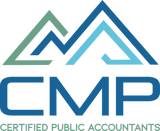Finding ways to lower your tax burden can be time-consuming and risky at the same time. The goal is to maximize your tax savings without violating tax law. One way to do this is by purchasing property and making strategic use of depreciation allowances to save money.
At CMP, a Utah CPA firm, we work with clients every day to help them understand the benefits of real estate cost segregation. Real estate cost segregation offers a practical way to reduce your tax burden. In this post, we'll explain everything you need to know about using cost segregation as a tax strategy & planning.

What is Cost Segregation in Real Estate?
Cost segregation is a tax strategy available to corporations, partnerships, LLCs, and individuals. If you have purchased, expanded, remodeled, or constructed real estate, you have the option of using an accelerated depreciation schedule for reducing taxable income.
Real estate depreciation varies, depending on whether the property in question is residential or commercial. As a general rule, residential properties depreciate over 27.5 years and commercial real estate depreciates over 39 years. Using an accelerated depreciation schedule allows you to write-off more of the real estate cost at the time of the purchase or remodeling to save money on your taxes.

How a Cost Segregation Study Works
The best way to determine if cost segregation is a viable strategy is to conduct a cost segregation study. Cost segregation studies examine your real estate assets to identify and classify them into different depreciation periods to shorten the amount of time to depreciate the property, in order to reduce your current income tax obligations.
Shorter depreciation periods for assets may apply to:
- Non-structural building elements
- Exterior land improvements
- Indirect construction costs
If you conduct a cost segregation study, the goal is to find any construction-related costs that can be depreciated on a shorter schedule than the building itself. As we already mentioned, the depreciation for a commercial building is 39 years, but a cost segregation study can identify non-structural elements that can be depreciated over a shorter tax life of 15 years or less.
The items most identified in these studies are items that are affixed to the land but not related to the overall operation and maintenance of the building itself. Examples include parking lots, walkways, dumpster enclosures, curbing, fencing, and retaining walls. Landscaping may also be included and may be further broken down into individual items, including plants, sod, trees, shrubs, and mulch.
When it comes to property improvements, understanding tax rules can make a big difference. If you’ve ever wondered what is the 121 home sale exclusion and how it might reduce the taxes you owe when selling your home, our guide breaks it down in plain English so you don’t miss out on valuable savings.
Benefits of Cost Segregation Study
Conducting a cost segregation study can benefit you as a taxpayer in a variety of ways. These ways include:
- Accelerating your depreciation, which can free up cash flow for routine operating expenses.
- Increased cash flow resulting from your tax savings, which may be put into short-term and long-term investments.
- The study itself creates a clear audit trail of cost and asset allocations. Improper documentation often leads to unfavorable audit adjustments, so a study can head off many such issues early in the audit process.
- A study may identify catch-up opportunities for earlier land improvements since tax laws now allow for taxpayers to deduct any remaining depreciation in the year the cost segregation analysis is completed.
- The study may identify additional tax savings opportunities.
The cost of cost segregation is likely to be mitigated by the resulting tax savings, making it a worthwhile investment for many property owners.
When Should a Cost Segregation Study Be Conducted?
The timing of your cost segregation study is up to you, but there are some things you should know. Properties that are eligible for cost segregation include all properties constructed, purchased, remodeled, or expanded since 1987. Because of the 39-year depreciation schedule for commercial properties, improvements made in 1987 would still be eligible for depreciation as of 2020.
Our advice is that on an existing structure, the best time to evaluate cost segregation is in the year of purchase or remodeling. If you have a project that is still in the planning stages of construction, then you may want to consider doing a study before you begin to get a handle on your potential tax savings.
Cost Segregation Study Eligibility
Which assets are eligible for cost segregation and potential tax deductions? The first thing you need to know is that land may not be depreciated. You may take deductions for elements of construction and remodeling, as discussed above, but the amount you pay for the land is not part of the equation.
That said, land improvements may be eligible. For example, if you bought a property and added a fence, a parking lot, and landscaping, some or all of the expenses you incurred to make those improvements could be depreciated on a 5, 7, or 15-year schedule, depending on IRS rules. You can review depreciation schedules in IRS publication 946, which you can read here.
Other potential carve-outs for shorter depreciation lives include the flooring used in the building, extra wiring and plumbing (especially in a manufacturing facility) may also be eligible for much shorter depreciation periods.
Cost Segregation to Increase Annual Depreciation
How can you use cost segregation to increase annual depreciation? Let's look at a quick example.
Say you bought a small rental property for $700,000. After you purchased the property, you spent $100,000 in improvements, including landscaping, repaving walkways, and building a new parking lot. With a cost segregation study, you could depreciate the cost of the parking lot over 15 years.
If you built the parking lot 5 years ago, you could take catch-up deductions to make up for the years when you didn't claim depreciation deductions on your tax return. You may also be eligible for bonus depreciation, which allows you to take a larger chunk of your deduction in the first year the property is purchased, built, or renovated.
When it comes to real estate investments, understanding how different tax incentives work can significantly impact your long-term returns. If you’re looking to expand your portfolio while reducing your tax burden, our latest guide on real estate opportunity zones explains how these federally designated areas can help investors defer capital gains and unlock additional savings on qualified projects.
Does a Cost Segregation Study Increase Audit Risk?
You may wonder whether conducting a cost segregation study will increase your audit risk. There's no easy answer to that, but here's what you need to know.
Statistically speaking, people with high incomes and a lot of deductions are more likely to be on the receiving end of additional scrutiny from the IRS, including audits. People who deduct a lot of expenses sometimes take advantage of the system or claim deductions for which they are not eligible. It makes sense that the IRS would want to look closely at tax returns that fall into that category.
That said, there is no reason to believe that conducting segregation studies for personal property will put you at an increased risk of a tax audit. The IRS audited approximately one in every 220 tax returns in 2019, which is significantly fewer than in previous years. Wealthy people are far more likely to be audited than low and middle-income taxpayers.
Impact of TCJA to Cost Segregation Study
You may be wondering what impact, if any, the Tax Cuts and Jobs Act (TCJA) of 2017 had on cost segregation. The good news is that there were some changes included in the law that make cost segregation studies even more beneficial than ever. Here's what you need to know.
- The TCJA made used property eligible for bonus depreciation for the first time. That means that any assets that are classified as personal property may be eligible for the bonus deduction.
- The TCJA increased the bonus percentage from 50% to 100% through 2022. If you choose, you may use the accelerated schedule and claim up to 100% of your deduction in the first year after you buy or improve your property.
- The negative impact of the TCJA is related to "qualified improvement property," which was carved out in the PATH Act of 2015. It specified three property classifications, including Qualified Leasehold Improvement Property, Qualified Restaurant Property, and Qualified Retail Improvement Property, to be eligible for 15-year depreciation. The TCJA was meant to include that language, but it was omitted. This means that plumbing, ventilation, and alarm systems may not be depreciated on the accelerated schedule. The hope is that eventually, personal property that falls into these three categories will once again be eligible for accelerated deductions.
The overall impact of the TCJA on cost segregation has been a positive one for property owners. If you have personal property assets that are eligible for deductions, it may be worthwhile to pay for a study to determine your potential savings.
If you currently own or plan to buy a property and make improvements to it, it may be worthwhile to pay for a study to determine how much money you can save on your taxes. Try our cost segregation calculator to calculate your potential savings from a cost segregation study. CMP is here to help with our cost segregation service, simply click the button below to request an appointment.

















